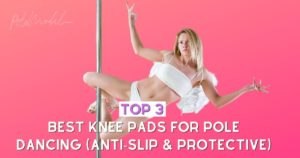The fashion world has long been known for its requirement that models must be tall, but why is this the case? From historical and cultural trends to modern movements towards diversity and inclusion in the industry, this article will take an unbiased look at the reasons behind height requirements for models.
What Are The Height Requirements For Models?
The industry standard for runway models is 5’8″ or taller without heels.
Female editorial models usually range from 5’9″ to 6′, while male editorial models can typically be anywhere from 5’11” to 6’3″.
These are just ballpark figures; many agencies allow exceptions depending on a model’s individual look or other factors.
However, these numbers still stand as general guidelines when it comes to casting decisions.
Historical And Cultural Reasons For Height Requirements In Modeling
Throughout history, there have been various cultural norms surrounding beauty standards that often put emphasis on being tall and slender.
During the Victorian era, women were expected to have a specific silhouette: narrow waists with full hips and busts – all of which was easier achieved by those who had longer legs relative to their torso length.
Similarly in Ancient Greece, statues depicting beautiful women featured extremely long limbs with small torsos – reflecting society’s ideal image of what constituted “beauty” during that time period.
This idea of beauty through elongated limbs has continued throughout history into more recent decades when height requirements began appearing more frequently in fashion magazines and runways around the world.
Current Movements Towards Diversity And Inclusion
As times change so do ideas about beauty standards across different cultures worldwide – making way for wider recognition of diverse looks within modelling circles also known as “inclusive modelling.
” This includes accepting people who don’t fit typical body types such as petite sizes or plus sizes as well as people who have physical disabilities or illnesses like vitiligo and albinism which used to keep them out of the spotlight before now.
.
As conversations around representation become louder each year, more opportunities are opening up for those outside traditional categories – allowing them access into a historically exclusive field where they can express themselves freely alongside others doing similar work.
.
With brands increasingly wanting their products marketed by individuals from all backgrounds regardless if they meet classic criteria like height requirements – we may soon see even less stringent rules regarding what type of person gets booked for jobs than ever before!
Conclusion On The Ongoing Debate Around Height Requirements
Though there are certainly some industries that require certain heights due safety concerns (such as firefighting), there isn’t necessarily any scientific evidence proving why one would need to be taller than average in order succeed at modeling — other than societal expectations based off old-fashioned views on beauty standards.
.
While it’s true that most high-fashion campaigns prefer tall girls because they’ve traditionally looked better next clothes — this doesn’t mean shorter girls can’t make successful careers out of modeling too!.
Change is already happening within fashion circles today with plenty new initiatives supporting diversity among aspiring talent aiming break down outdated notions surrounding standardization within modelling careers! Representation matters deeply no matter what size you wear & everyone should feel capable expressing their unique selves confidently — regardless whether they meet typical industry criteria or not!
For more quality content like this, be sure to check out the Pole Model Youtube Channel!
See you there 🙂


